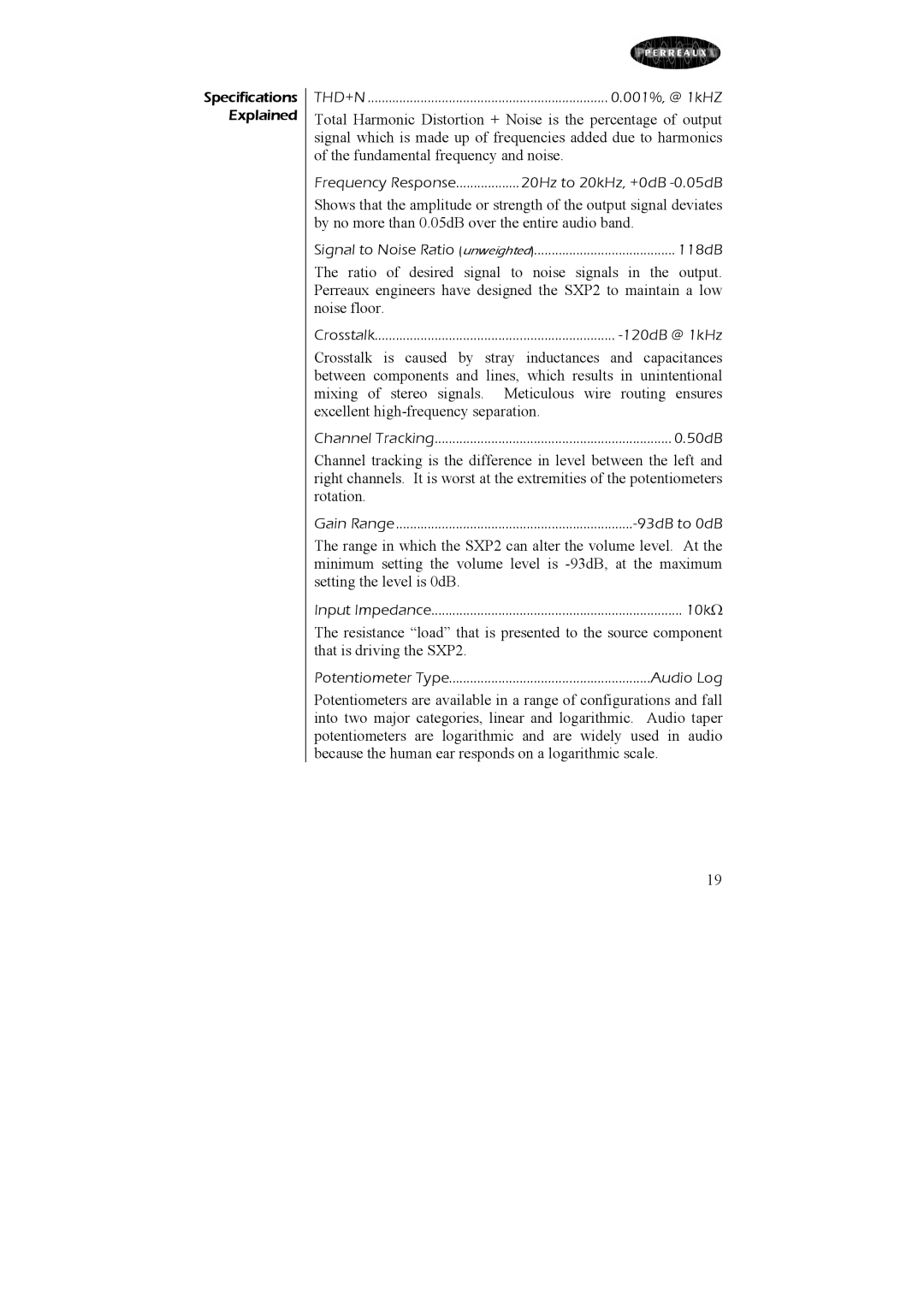Silhouette SXP2 specifications
The Perreaux Silhouette SXP2 is an impressive high-fidelity stereo amplifier renowned for its sophisticated design and advanced engineering. It represents an elegant blend of form and function, catering to audiophiles who demand top-tier performance and aesthetics.One of the standout features of the SXP2 is its compact yet powerful design. Measuring only 80mm in height, it delivers robust audio performance while occupying minimal space, making it ideal for modern living environments. Despite its small stature, the SXP2 outputs a remarkable power level, with a total power output of 2 x 40 Watts into 8 Ohms, ensuring it can drive a wide range of speakers with ease.
The SXP2 utilizes a class A/B amplifier topology, which strikes a balance between efficiency and thermal performance. This configuration provides a warm and rich sound signature, characterized by excellent clarity and detail across the frequency spectrum. The amplifier employs advanced thermal management techniques to maintain optimal performance levels, even during extended listening sessions.
A notable technological advancement in the SXP2 is its use of high-quality components. It incorporates premium capacitors and resistors that contribute to superior modulation of the audio signal. The amplifier also features a low-noise power supply, which helps eliminate unwanted artifacts in the output signal, allowing for a more immersive listening experience.
Connection options on the SXP2 are abundant, allowing for versatility in integrating with various audio setups. It includes multiple line-level inputs for sources such as CD players, record players, and smartphone docks. The amplifier is also equipped with speaker binding posts that accommodate different cable types, ensuring stable connectivity.
Furthermore, the user-friendly interface of the SXP2 simplifies operation while maintaining a sleek and modern appearance. Its intuitive controls make it easy to adjust volume and source selection, while discrete status indicators provide real-time feedback on operational status.
The aesthetic design of the Silhouette SXP2 is equally commendable. Its minimalist exterior features a brushed aluminum finish that exudes sophistication, making it a commendable addition to any audio setup. This amplifier not only enhances sound quality but also complements contemporary interior design.
In conclusion, the Perreaux Silhouette SXP2 stands out as a remarkable amplifier that combines compactness, power, and audio fidelity. Its class A/B topology, premium components, and versatile connectivity options make it an excellent choice for anyone seeking a high-end listening experience without compromising on space or style.

